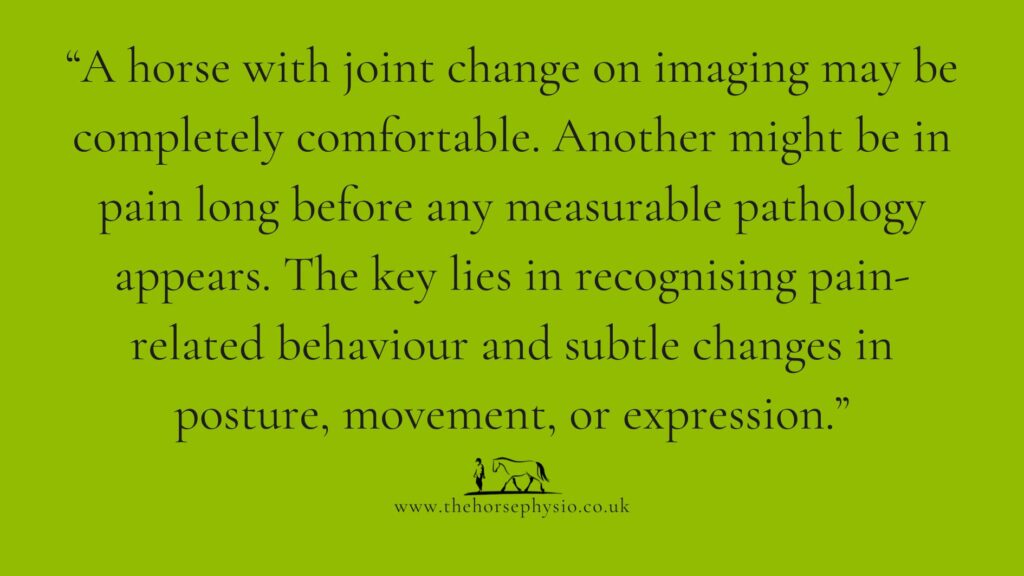Prefer to listen? Click on the video above. If you enjoy reading, keep scrolling. You can support my work by buying me a coffee, joining the Healthy Humans, Happy Horses online learning hub, or signing up to my newsletter. Remember to follow, like, and share on Facebook, Instagram and YouTube. Please note that this may contain affiliate links. Thank you – your support means so much!
The Equine Veterinary Journal’s 2025 special focus on musculoskeletal disorders in sport horses highlights some remarkable advances in science. Using metabolomic and proteomic profiling, researchers are identifying molecular markers that could indicate osteoarthritis long before any clinical signs appear.
These techniques — which analyse the tiny molecules and proteins circulating in joint fluid — hold huge potential for earlier diagnosis and, in time, more targeted treatments. In human medicine, similar approaches are transforming how chronic joint conditions are understood.
But it also raises an interesting question.
Even when early osteoarthritis is detected, what does that mean for the horse’s comfort, or for performance? In people, osteoarthritis doesn’t always cause pain, limit daily life, or affect sporting ability. So perhaps, alongside studying molecules, we also need to keep studying behaviour — the language our horses use to tell us how they feel.

That’s where tools such as the Ridden Horse Pain Ethogram come in — a scientifically validated method developed by Dr Sue Dyson and colleagues to help identify signs of discomfort under saddle. You can read more at www.harmonioushorsemanship.co.uk.
As a physiotherapist, I often find that hands-on assessment tells us things no scan can: changes in muscle tone, areas of guarded movement, differences in reaction or relaxation. These observations help guide both diagnosis and management, and they empower owners to play an active role in their horse’s well-being.
You don’t need specialist equipment to start noticing. In my free Horse Health Check course (sign up to my newsletter for details on how to join), I teach simple ways to feel for heat, tension, or reduced flexibility — the kinds of clues that can help spot problems early and keep horses comfortable for longer.
Scientific discovery is vital, and I celebrate every step forward in our understanding of equine musculoskeletal health. But early detection isn’t just about biomarkers and imaging. It’s also about empathy, observation, and connection — learning to listen when our horses whisper, not just when they shout.
📖 Reference: Morgan, R., Ortved, K., Clayton, H.M., & Oosterlinck, M. (2025). Clinical insights: Musculoskeletal disorders of the sports horse. Equine Veterinary Journal, 57(5), 1152–1160.
🌟 About Sue Palmer, The Horse Physio
Sue Palmer MCSP is an award-winning Chartered Physiotherapist, educator, and author. Known for her compassionate, evidence-informed approach, Sue specialises in human health and equine well-being, with a focus on the links between pain and behaviour in horses. She is registered with RAMP, ACPAT, IHA, CSP, and HCPC.
📚 Books include:
• Harmonious Horsemanship (with Dr Sue Dyson)
• Understanding Horse Performance: Brain, Pain or Training?
• Horse Massage for Horse Owners
🌐 Learn more at www.thehorsephysio.co.uk